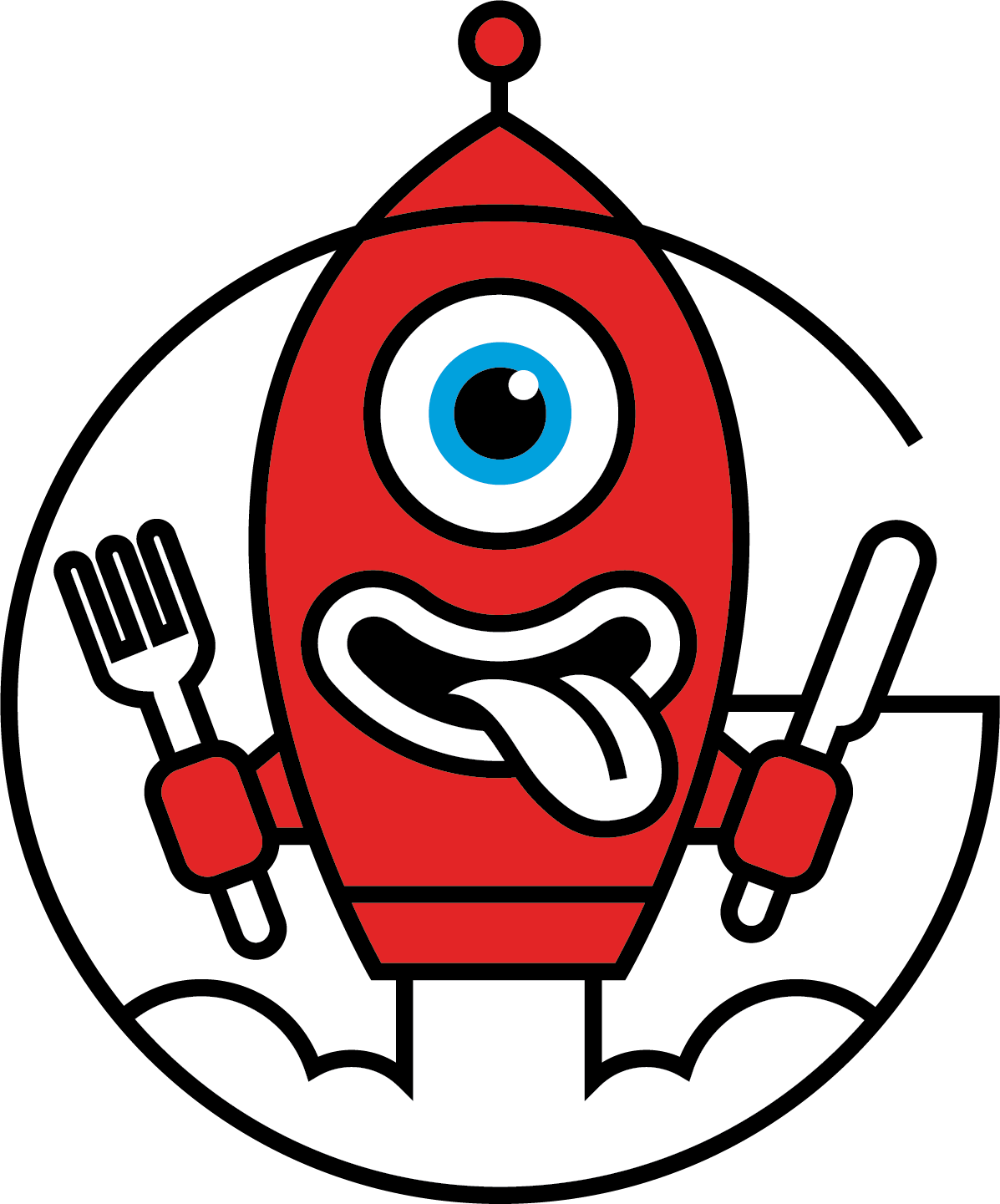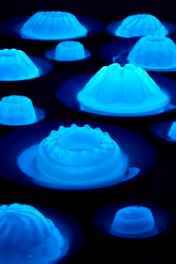SCIENCE PROJECTS
FOOD FLAMETHROWING
ADULTS ONLY please!
This is extremely dangerous in the wrong hands, and should only be done outside with a fire extinguisher to hand.
All you need is some instant custard powder (I use Bird’s), a length of tubing and a flame source. And somewhere OUTSIDE to do it!
Scoop up a couple of teaspoons of custard powder into your tube and shake it into the middle of the tube. Light your flame source (a kitchen blowtorch or a camping stove would do) and place it on a firm, stable surface.
Take the business end of the tube and hold it a few inches from the end. Curl your fingers around the other end so you can put it to your lips (lips to your hand rather than the tube itself for extra safety). Position the tubing so that you’ll be blowing the powder through the flame, from about 6 inches away. Make sure your friends and family are behind you, then blow the powder hard, firmly and evenly through the flame.
You rock.
EXTRAORDINARY SECRETS OF CAKE
Take your family and friends on an edible science adventure with an ordinary, delicious velvet cake made of unassuming, everyday ingredients. Because when you take a closer look at those ingredients, you’ll discover some extraordinary, bizarre secrets…including insects! You can use a cake bought from a shop, decorated with a few extra sweets from the list on the right, or you can use the recipe here to make your own. Feed it to your friends first (be careful though – check that they’re not vegetarian or have religious/ethical issues with eating meat…or insects), and then show them the facts and photos on the next page.
The Secrets of Cake:
Pink Food colouring/Pink Mini-marshmallows containing E120 (also called ‘cochineal’ or ‘carmine’): Cochineal is made from crushed-up cochineal bugs.
Chewy sweets: gelatine is used to make nice chewy sweets but its origins are pretty odd: it’s made from boiled-down animal skin and bones
Popping candy is made by cooking candy under pressure together with CO2 gas. As it cools, bubbles of CO2 are trapped in the sugar syrup. In your mouth, your saliva dissolves the candy, and as each bubble wall breaks, the pressure escapes with a little pop.
Butter You can make your own butter by filling a jam jar 1/3 full of room temperature double cream and shaking it until the fat globules group together and separate from the water. After 5 minutes or so, the jam jar will have half butter, half murky water. Strain it through a tea towel over a sieve and then squeeze any last drops out of it. Then eat. My video here: http://youtu.be/fGYMscQl58Q
Sugar How do you think your sugar gets so white? One way is to use Calcium triphosphate or bone char. This is made from the bones of cattle.
Eggs You can fry an egg on a piece of paper. It’s all about controlling heat conduction. Take a look at my video of it here: http://youtu.be/lmybxR97XyM
Cocoa Every cocoa tree produces around 1,000 beans a year. Sounds a lot but this only makes 1kg of cocoa
Vanilla This one can be revolting. Some flavours of vanilla are made using castoreum, a beaver’s anal secretion.
Bicarbonate of soda is an alkali. Try mixing it with a vinegar, an acid. The frothing that you will see is CO2 escaping, a product of the reaction
Flour contains insect fragments! The U.S.A allows 150 fragments per 100g
Salt: It is a myth that salt and sodium are the same thing. Salt is made from sodium and chloride. Only 0.4g of 1g of salt is sodium. Salt is also not the only source of sodium - the additives sodium nitrite, sodium bicarbonate and monosodium glutamate are too.
Buttermilk is made by fermenting low fat milk with lactic acid, a process that converts carbohydrates to sugars. Lactic acid is a bacteria has been used in our cooking for over 4,000 years
Cream cheese During the manufacturing process of cream cheese xanthan gum is often added to stabilise it. Weirdly, it is made from a bacteria, Xanthomonas campestris, that is also found in rotting vegetables
Happy eating!
FLUORESCENT JELLIES
I made this for a Hallowe’en special on ITV’s This Morning
NB You do need a UV light for this. You can find them very easily online. I buy mine from Lyco
Tonic water jellies – made with extra sugar and lemon juice so that kids can enjoy the taste of the tonic water!
Requirements
6 x clear glasses
Or: 1 large jelly mould and a GLASS/see-through plate to put the jelly on if making a single large moulded jelly
Ingredients – makes 1 large moulded jelly or 6 glasses of jelly
1 pack of leaf gelatin (enough to firmly set 1 litre of jelly, at 1.5x the concentration listed on the gelatin packet)
2 x lemons, juiced
1 litre tonic water (chilled in the fridge)
100g caster sugar
Method
Cut the gelatin leaves into small pieces using scissors and put them into a large heatproof bowl. Pour 200ml of tonic water over the gelatin and leave for 10 minutes to start it softening. Put the bowl in a microwave and heat on full power for 50 secs (or place the bowl over a saucepan of boiling water), then add the sugar and stir until both the gelatin and sugar have completely dissolved. Don’t let it boil. Add the sugar and lemon juice and stir until it has dissolved, too.
Add the remaining chilled tonic water, pouring it in as carefully as you can to avoid it fizzing (you want to lock in all those bubbles).
If you are using jelly moulds, lightly grease them inside using vegetable oil on a piece of kitchen paper. Pour the mixture, equally carefully, into your jelly moulds (or glasses if using) and place in the fridge to set for at least 3 hours.
Serve under UV light. The darker it is, the better the effect, so serve at night, with the lights turned out and the UV bulb as close to the jellies as possible!
If you like this, you’ll find lots more like it in The Extraordinary Cookbook



